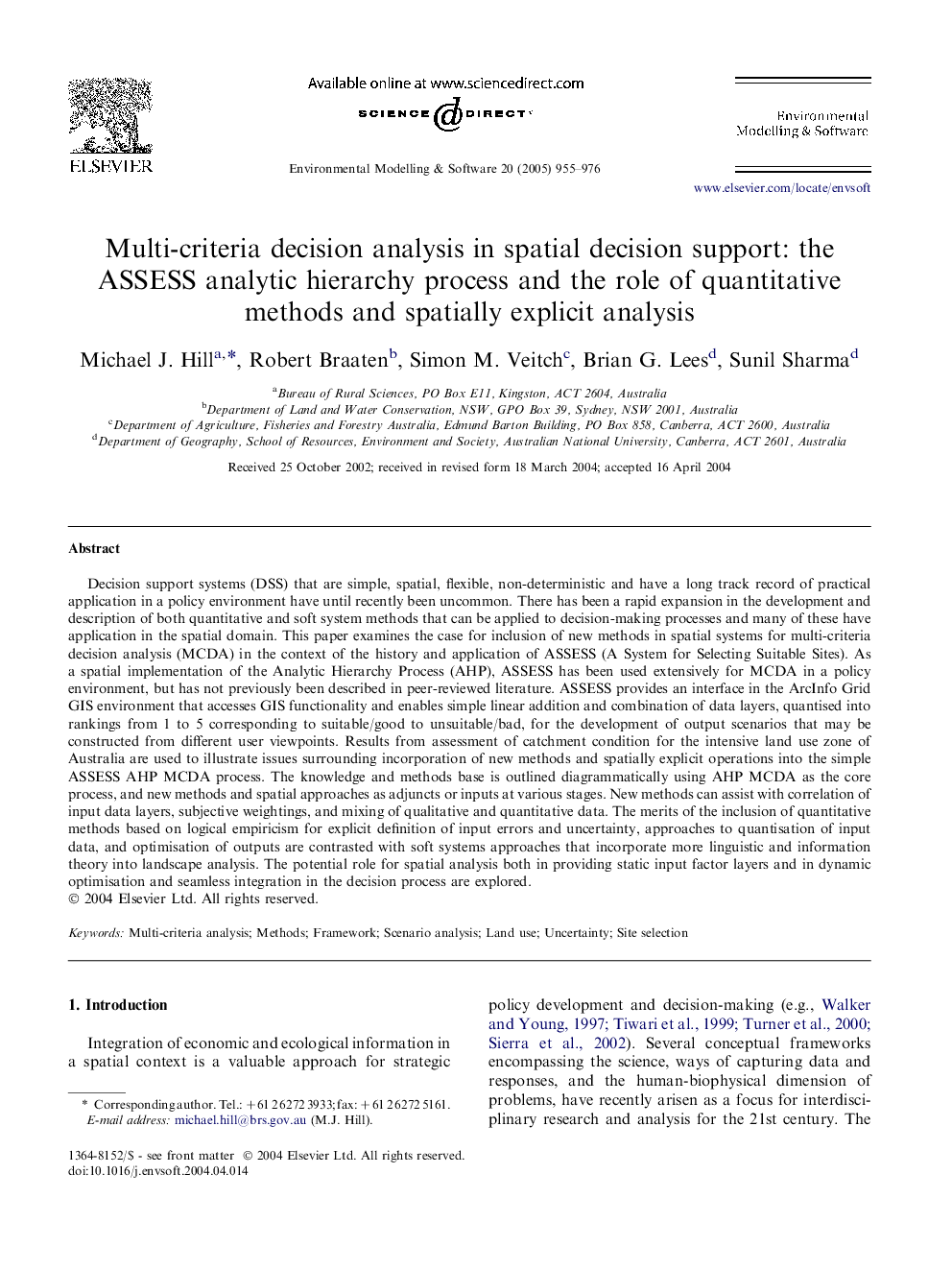| کد مقاله | کد نشریه | سال انتشار | مقاله انگلیسی | نسخه تمام متن |
|---|---|---|---|---|
| 10370886 | 876572 | 2005 | 22 صفحه PDF | دانلود رایگان |
عنوان انگلیسی مقاله ISI
Multi-criteria decision analysis in spatial decision support: the ASSESS analytic hierarchy process and the role of quantitative methods and spatially explicit analysis
دانلود مقاله + سفارش ترجمه
دانلود مقاله ISI انگلیسی
رایگان برای ایرانیان
کلمات کلیدی
موضوعات مرتبط
مهندسی و علوم پایه
مهندسی کامپیوتر
نرم افزار
پیش نمایش صفحه اول مقاله

چکیده انگلیسی
Decision support systems (DSS) that are simple, spatial, flexible, non-deterministic and have a long track record of practical application in a policy environment have until recently been uncommon. There has been a rapid expansion in the development and description of both quantitative and soft system methods that can be applied to decision-making processes and many of these have application in the spatial domain. This paper examines the case for inclusion of new methods in spatial systems for multi-criteria decision analysis (MCDA) in the context of the history and application of ASSESS (A System for Selecting Suitable Sites). As a spatial implementation of the Analytic Hierarchy Process (AHP), ASSESS has been used extensively for MCDA in a policy environment, but has not previously been described in peer-reviewed literature. ASSESS provides an interface in the ArcInfo Grid GIS environment that accesses GIS functionality and enables simple linear addition and combination of data layers, quantised into rankings from 1 to 5 corresponding to suitable/good to unsuitable/bad, for the development of output scenarios that may be constructed from different user viewpoints. Results from assessment of catchment condition for the intensive land use zone of Australia are used to illustrate issues surrounding incorporation of new methods and spatially explicit operations into the simple ASSESS AHP MCDA process. The knowledge and methods base is outlined diagrammatically using AHP MCDA as the core process, and new methods and spatial approaches as adjuncts or inputs at various stages. New methods can assist with correlation of input data layers, subjective weightings, and mixing of qualitative and quantitative data. The merits of the inclusion of quantitative methods based on logical empiricism for explicit definition of input errors and uncertainty, approaches to quantisation of input data, and optimisation of outputs are contrasted with soft systems approaches that incorporate more linguistic and information theory into landscape analysis. The potential role for spatial analysis both in providing static input factor layers and in dynamic optimisation and seamless integration in the decision process are explored.
ناشر
Database: Elsevier - ScienceDirect (ساینس دایرکت)
Journal: Environmental Modelling & Software - Volume 20, Issue 7, July 2005, Pages 955-976
Journal: Environmental Modelling & Software - Volume 20, Issue 7, July 2005, Pages 955-976
نویسندگان
Michael J. Hill, Robert Braaten, Simon M. Veitch, Brian G. Lees, Sunil Sharma,